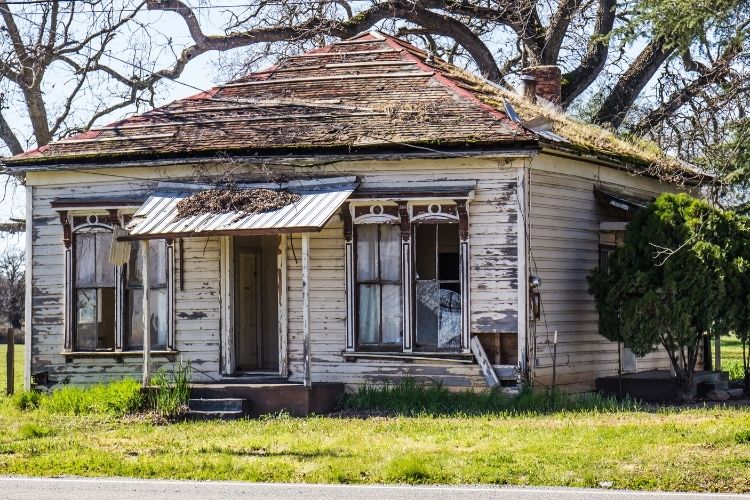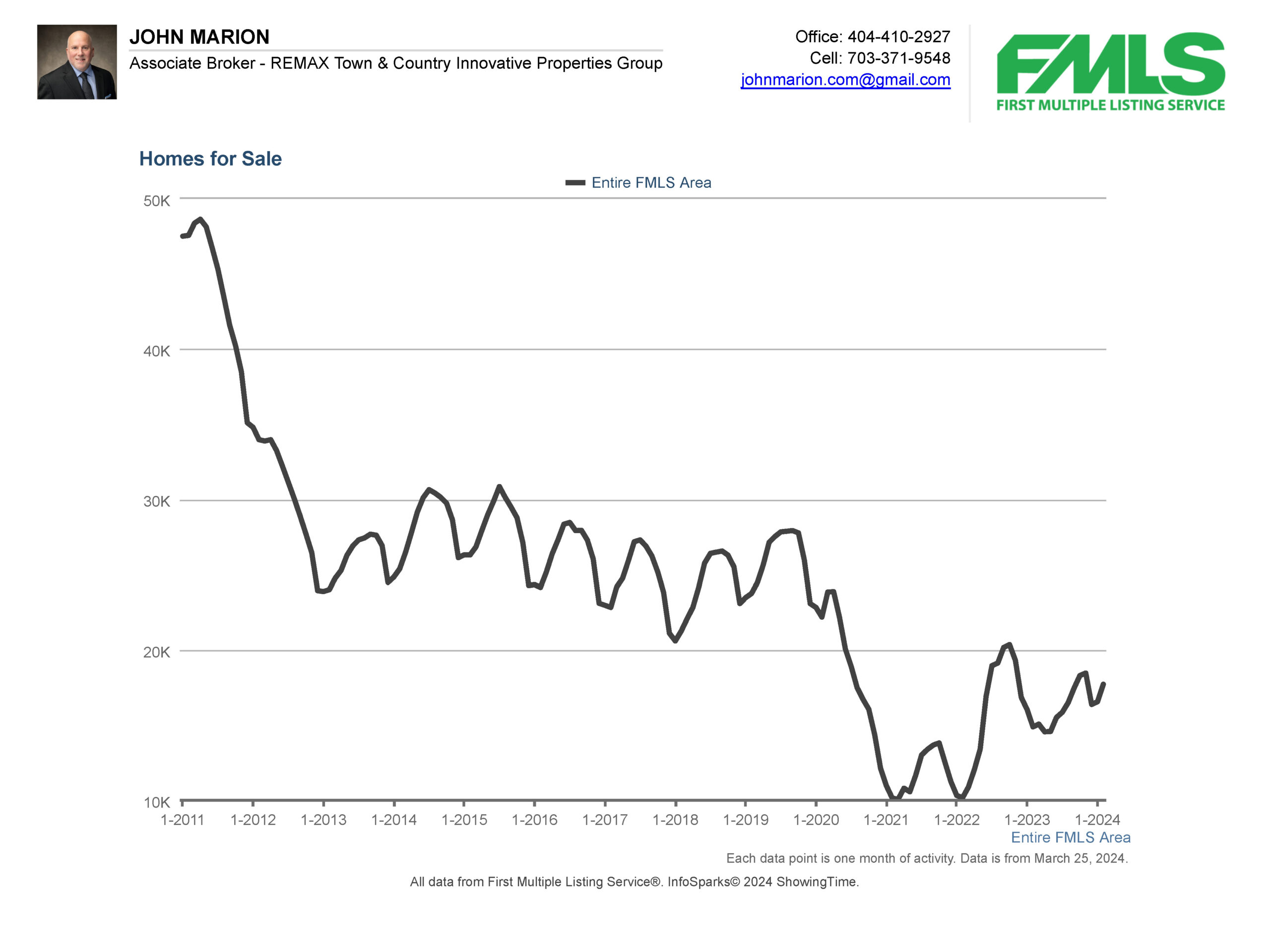How to Profit by Investing in Single Family Housing Fix and Flip Projects aka flipping houses for profit.
Finding Deals
In order to profit by buying, rehabilitating and reselling a single-family house, the first goal is to find a good deal. While this is an obvious step, it’s not easy.
Finding a single-family house deal takes a lot of work and requires experience and knowledge to properly analyze deals in any given market. Usually, several potential deals will need to be analyzed before a true deal can be verified.
Finding deals to analyze requires a combination of marketing, networking, and talking to lots of people. It can be time consuming to find just one deal.
How to Analyze a Deal
Here is how to quickly analyze a deal.
First, determine what the re-sale price of the subject property would be it if was sold completely renovated for full retail value. Investors like to call this number the After Repair Value (ARV). The ARV can be determined with either an appraisal or a comparative market analysis (CMA or sometimes called “comps”) from a real estate broker.
Calculate the All-In Amount
Second, decide the all-in amount that makes sense for the deal and multiply the percentage by the ARV. The all-in range should fall between 65% and as high as 85%.
The all-in amount includes the following:
- Price. This is the price you pay for the property.
- Closing Costs. This includes attorney fees, wiring fees, escrow amounts, and loan fees.
- Repair Costs. This is how much it will cost for material and labor to fix up the house.
- Holding Costs. Interest, taxes, insurance, utilities, HOA fees, etc.
The gold standard for wholesalers is 65% which is a great deal on any property. For other single-family house rehabbers, the margin can be 70-75%. It can even be up to 80-85% on lightning-fast home improvement projects with higher-valued properties in a hot market or assignment of contract exit strategies.
Additional Costs
Third, calculate the all-in costs for acquisition, holding, and construction (including punch-out items and final cleaning). Deduct that amount from the calculation in step two, above. The result will be the purchase price that makes a potential deal an actual deal.
Use this formula to calculate the highest price you should pay for a property based on your target percentage (65% to 80%).
ARV x [target %] minus COSTS (repair, closing, holding) = Purchase Price
Here is the calculation on a property with an ARV of $400,000 and an all-in target of 75% with repair costs of $40,000.
$400,000 x 75% = $300,000
Minus $40,000 = $260,000
Therefore, the acquisition price for this house should be $260,000 or less for it to be a deal that makes sense at 75% all-in. There are other costs associated with the resale—real estate commission is a big one—so the difference between the all-in costs and the resale price is not all profit.
Deal Flow
Getting multiple good deals, like the example above, on a regular basis, requires the development of systematic methods for finding potential deals. Consistent deal flow is the goal of active real estate investors and deal sponsors.
Many passive investors like to create profit while lowering risk and effort by co-investing in a private equity fund managed by a sponsor who is good at finding deals and managing projects.
Developing the Scope of Work
A scope of work is a line-item list of improvements that will be completed in order to bring the value of the property up to the determined re-sale price.
Depending on the amount of deferred maintenance and damage to the property, the scope of work will vary greatly from one property to the next.
Minimally, most properties will require minor repairs, fresh paint, and new flooring.
Below is a sample of a scope of work summary showing the general categories in a single-family house renovation project.
To get the actual home renovation spreadsheets for free, visit:
https://alphadogcapital.com/free-download-scope-of-work-spreadsheet/
How to Maximize Profits
Minimum profits are projected prior to closing on the acquisition of a property. A due diligence period allows for time to make sure the deal makes sense and that there are no hidden surprises. Additionally, having a line-item in the scope of work budget for “contingencies” is always a good idea. The line called “Cost Over Runs” toward the bottom of the sample Rehab Summary Budget is for contingencies. The estimated range for contingencies should probably be between 5% and 10% of the total project budget.
Ideally, the project will have potential for higher than minimum projected profit. Construction savings and managing a project efficiently can lower the actual costs from the budgeted amounts for some line items.
Construction Cost Savings
Investors who are constantly doing home renovation projects know where to find good deals on building materials and finishes such as lighting, hardware, and flooring. Flexibility in the decorative selections can reduce renovation costs when a vendor suddenly gets a supply in stock of a previously unexpected item or when they need to move inventory to make room for incoming shipments.
Project Management Efficiencies
Experienced contractors, trades workers, and vendors are all good sources for solving problems and helping to keep the project on track, possibly shortening the timeline for completing the renovation.
Active investors stay on top of their game by meeting with the project manager or contractor on-site as often as possible. Thus, problems and challenges are addressed immediately in order to keep the project on track (and the cash flowing).
Construction and renovation problems with single family houses usually don’t require complex, time-consuming solutions. Revitalizing a single-family home with deferred maintenance will take time, but experienced workers who do this type of work regularly have virtually no time delay when they run into an unexpected problem. These workers can turn on a dime, fix the problem quickly, and move on to complete their tasks.
Cost savings and work efficiencies result in less time and expense completing the job. By coming in under-budget, it is possible to achieve higher returns than the minimum projected profit.
How to Profit by Investing in Single Family Housing Fix and Flip Projects continues below.
Download the Free Free Report: Fix and Flip Profits
Managing Risk for Renovation Projects
Some risk is inherent in every SFH renovation project, while other risks can develop due to sudden economic changes in the housing market.
How to Profit by Investing in Single Family Housing Fix and Flip Projects
The most common risks can be managed by processes and tasks that always should take place on every transaction. Other types of risks include surprises and changes in market conditions that can threaten the success of a project.
Due Diligence
Normally a due diligence period is agreeable to the seller of a SFH. This time period can be any number of days but 7 to 10 days can usually be negotiated under normal market conditions. Experienced, active investors may be able to get the seller to agree to a longer time period.
The due diligence period should be used to conduct every type of due diligence needed to fully understand the risks. These risks include property condition, repair costs, adverse conditions of the property location, and the presence of easements and encroachments on the property—to name a few.
Title
Ownership of the property should be verified to make sure the seller actually has the rights to sell the property. This is normally determined by the title company or attorney handling the closing transaction.
The purchase and sale agreement contract from the Georgia Association of REALTORS contains a provision that the seller must have good and marketable title. Many other contracts used in the residential real estate industry probably have a similar provision, but it is always good to check and make sure.
A final word about the risk of title issues is that it’s always smart to buy a title insurance policy. If a loan is taken out to partially pay for the purchase of the property, make sure the title policy covers the new owner for the full purchase amount of property. An enhanced title policy, to cover the owner, is a best practice. Ask the title company or closing attorney about enhanced title insurance coverage.
Insurance
Active investors need insurance to cover the property damage usually found in typical homeowner policies, but should include more. The insurance provider should be informed that the property is vacant and that ongoing improvements will be made to the property.
The insurance underwriter will probably want to see the scope of work in order to issue a policy that covers the increase in value as the property is improved. This change in value should be covered by the insurance policy as the renovations progress. (Also, know that the insurance will be for the “rebuild cost,” which is almost always higher than both the purchase price and the “market value.”)
Market Analysis
The experienced investor who is active in any given market already has a good handle on market conditions prior to making an offer to purchase a property. However, a market analysis for each property during the due diligence period is a best practice in order to reduce risk of overpaying.
Many factors can impact the price of single-family houses so it’s important to perform a market analysis for every property. The present market condition is only one factor. Each property has different features and is uniquely situated on its own parcel of land. Additionally, things like school district, neighborhood, street address, crime reports, and adjacent properties can greatly affect the value of properties that may otherwise have similar floor plans and features. Sometimes a house located on a particular street in a neighborhood can affect value of the property. This is the reason the street address is important and should be considered when evaluating the situation of a property.
Multiple Exit Strategies
Having more than one exit strategy is extremely important in risk management when it comes to buying, renovating and reselling. While the exit strategy is reselling the property after value is added, market conditions can change while the property is being renovated.
Active home rehabilitation investors will often plan on holding some of their properties as rentals as part of their long-range plan. So a natural secondary exit strategy for a single family house is turning it into a rental property for cash flow and then selling at a future date when market conditions improve.
Reselling can also be combined with renting, such as in a “lease purchase agreement” with a tenant-buyer; or it is often possible to resell the house with a tenant in place to another investor or investment company. The placement of a tenant in a property to produce a cash flowing asset to be resold can also be a primary, repeatable exit strategy.
Another variant of this is that cash-flowing rental houses can be bundled together and sold in a bulk transaction to an investment company looking to add more rentals to their portfolio.
Pre-Sale Marketing
New home builders almost always have their real estate agents marketing homes for sale before they are built. Many buyers will contract with the builder before construction begins, or in the early stages of construction. This is a pre-sale.
Investors can also pre-sell their single-family house prior to or during the renovation process. By working with an experienced real estate agent, the pre-sale marketing is an excellent way to get a head start finding a buyer.
Resale Marketing
Resale marketing is best done by listing the property on the local multiple listing service (MLS) used by real estate brokers to list homes for sale. Professional resale marketing will always include a set of professional photographs of the fully renovated house. Sometimes staging a home for the photographs and showings is a good idea.
Some active investors like to try selling their own properties without using a broker. And some of them are successful, but few can match the results of marketing a house for sale with a broker on the open market.
Research shows that the highest retail price can be achieved by listing the house on the open market with a broker. Properly exposing the property to buyers by listing it on the market is one of the factors appraisers use when giving an opinion of value and they rarely use house sales that have not been listed on the open market in their valuation report.
Cash In and Repeat
One of the benefits of investing in single family homes is that the process can be continually repeated because many such properties are continually coming available. There will always be houses with problems that can be purchased at a price that makes sense to achieve profits consistently.
By repeating the process, an active investor can build and scale a profitable single family house renovation business.
Managing Several Projects Simultaneously
Economies of scale can be achieved by concentrating in a geographical area and doing many projects at the same time. The profit margin on each renovation project increases by continually adding projects into the pipeline and renovating several houses simultaneously. Experienced, active investors who are good at finding deals and managing deal flow create greater profits for their co-investors and their company.
Conclusion – How to Profit by Investing in Single Family Housing Fix and Flip Projects
Profiting by investing in single family housing fix and flip projects can yield consistent returns year over year. Experienced investors know how to profit with home renovation projects in any type of market: up, down, or sideways. Backed by hard asset real estate and experienced management, the risk of capital loss is greatly reduced.

Fix and Flip Profits
Build wealth by passively investing in single-family house projects
How To Get Started
Sign Up
The first step to invest with us is to fill out our Interest Form. We'll connect and discuss your goals, then we'll find the best investments to help you meet these goals.
Invest and Enjoy
After you invest you can just sit back, relax, and receive quarterly cash flow payments from your passive investments.





